The following article is a summary of a presentation by Christopher Eames at the Second International Conference of the Roger and Susan Hertog Center for the Archaeological Study of Jerusalem and Judah. Titled “Epigraphy in Judah,” the conference was attended by some of the world’s foremost epigraphers. The full academic paper on which this presentation was based will be published at a future date in the Jerusalem Journal of Archaeology.
Debate surrounding Jerusalem’s power, as the capital of a united Israelite monarchy and later as capital of the southern kingdom of Judah, has raged for as long as archaeology has been practiced, especially over the past several decades. The biblical account of First Temple Period Jerusalem (circa 1000–586 b.c.e.) spares no detail and makes no apology: Jerusalem, particularly under the reigns of David and Solomon (10th century b.c.e.), was the dominant city in the region, powerful in administration, with unfettered control over a broad territory.
It has become somewhat chic in the world of archaeology, however, to look down on the First Temple Period city as comparatively insignificant—especially during the time of David and Solomon. In the words of Prof. Israel Finkelstein and Neil Asher Silberman, Jerusalem went from a “modest highland town of about 10 or 12 acres” during the first half of the First Temple Period (Iron Age iia) to “an area of no more than 150 acres” by the end of the First Temple Period (Iron Age iib)—“hardly more than a small Middle Eastern market” (The Bible Unearthed: Archaeology’s New Vision of Ancient Israel and the Origin of Its Sacred Texts, pages 243 and 3).
In the critic’s view, the city (and wider Judean territory) could not hold a candle to the mighty northern kingdom of Israel and its own capital, Samaria. According to Finkelstein and Silberman, Samaria—quite unlike Jerusalem—was an “impressive,” “opulent,” “stunning” capital that “bespoke wealth, power and prestige”; it was the “most grandiose architectural manifestation of the rule of Omri and Ahab”—a “vast royal compound,” built with “daring innovation” on such an “enormous” scale that “can be compared in audacity and extravagance … only to the work that Herod the Great carried out almost a millennium later.”

Jerusalem’s physical size and grandeur—especially during the 10th century b.c.e.—has become a particularly hot topic of discussion over the past 20 years, thanks, in particular, to the remarkable discoveries of the late Dr. Eilat Mazar in the City of David and on the Ophel (discoveries made since the publication of Finkelstein and Silberman’s controversial book). But size is not the only measure of a city’s significance. Consider modern capitals, like the United States’ Washington, D.C., Australia’s Canberra, New Zealand’s Wellington. These cities rank on the lower end of the scale for size and population.
A far more important measure for a capital city is its administrative power. This is revealed in particular by its administrative media: inscriptions.
No other Iron Age ii/First Temple Period city in Judah, Israel or surrounding Levantine neighbors comes anywhere close to the number of discovered inscriptions, administrative and otherwise, as those found in Jerusalem.
Over the years, various corpora of inscriptions from various periods and geographic regions have been compiled. As yet no single corpus exists to collectively illustrate all First Temple Period/Iron Age ii inscriptions found in Jerusalem. This effort, based on an exhaustive combing of existing corpora, excavation reports and individually published articles, seeks to fill that void.
This (forthcoming) corpus will only include items of known provenance that have been officially published and found within the geographic boundaries of the City of David, Ophel, Temple Mount, Old City and adjacent valleys (i.e. Hinnom and Kidron).
The results highlight a Levantine city unmatched in archaeologically attested administrative power across the entire span of the First Temple Period, including the earliest phase of the city’s function as capital, during the 10th century b.c.e.
Below is a brief, preliminary summary of the findings in popular format, listed according to respective inscription types.
Monumental Inscriptions
Among Iron Age Judean sites, Hebrew monumental inscriptions have only been found in Jerusalem. The sole complete example is the Siloam Inscription: This 132-by-24-centimeter inscription, discovered inside Hezekiah’s Tunnel as text commemorating its completion, contains six registers of text made up of 57 words and 200 letters, and dates to the late eighth century b.c.e. Discovered in 1880, while the city was under Ottoman control, it is currently housed in Turkey’s Istanbul Archaeology Museum.
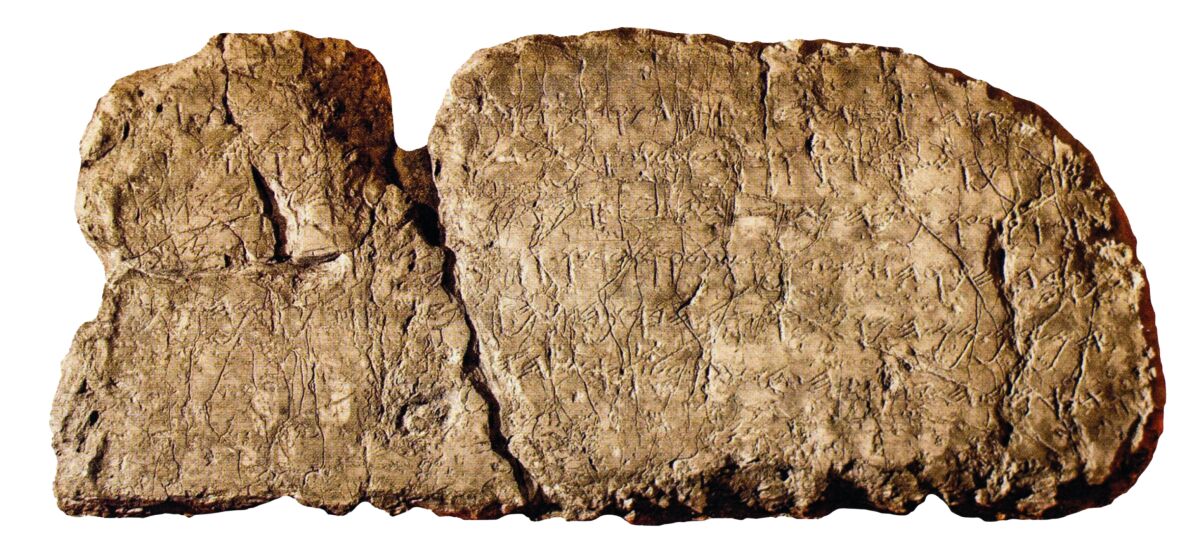
There are, however, an additional three fragments of other monumental inscriptions that have since been discovered in Jerusalem. One was discovered during Yigal Shiloh’s 1979–1985 City of David excavations (12-by-8 centimeters, 4 registers, 8 words, 23 letters, circa 700 b.c.e.); one during Meir Ben-Dov’s 1982 Ophel restoration work (27-by-24 centimeters, 4 registers, 6 words, 24 letters, early seventh century b.c.e.); and one during Ronny Reich and Eli Shukron’s 1995–2010 City of David excavations (14-by-10 centimeters, 2 registers, 3 words, 6 letters, eighth century b.c.e.).
These four monumental Hebrew inscriptions have a combined total of 16 registers of text, containing 75 words made up of 253 letters. (Compare this with Samaria, where one single fragment of a single monumental inscription bearing a single register of text with a single three-letter word—אשר “which”—was found.)
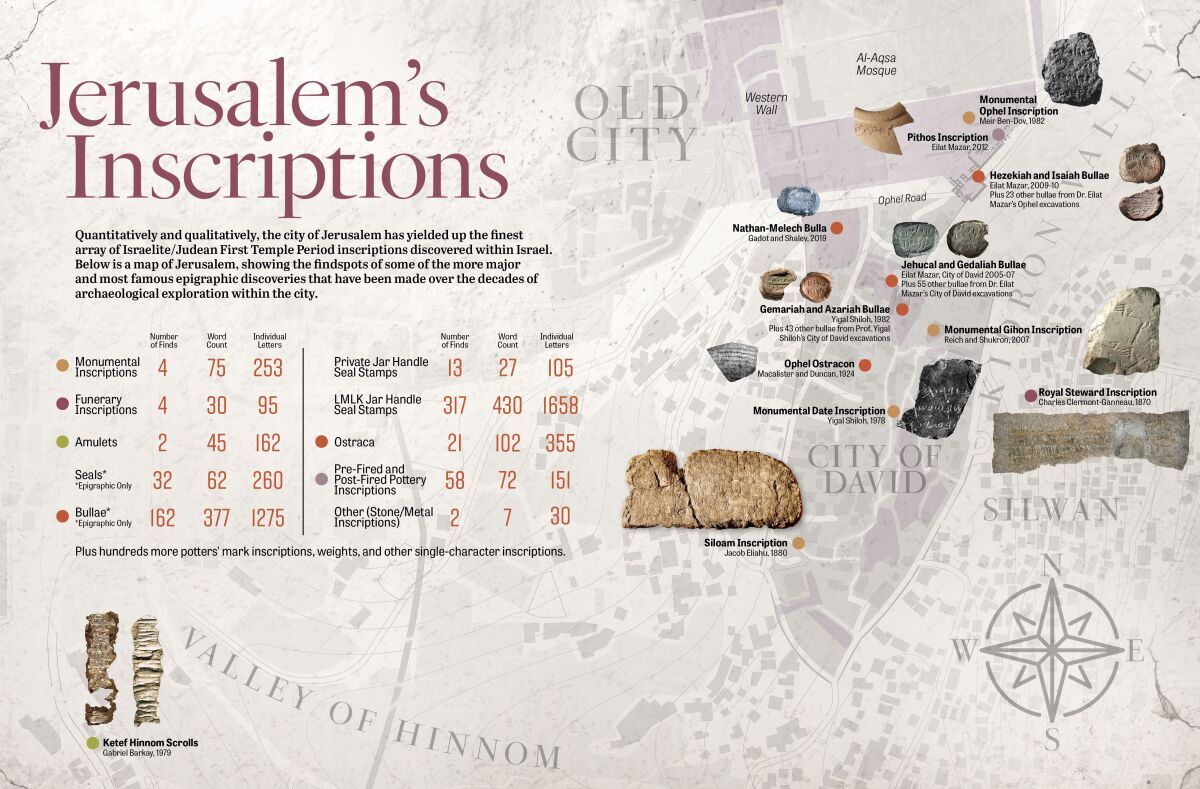
Funerary Inscriptions
In what could justifiably be classed as additional “monumental” inscriptions, four large (or once-large) First Temple Period funerary inscriptions have been discovered in Jerusalem within the Silwan necropolis on the edge of the Kidron Valley.
The most complete of these tomb lintel inscriptions, from Tomb No. 35 (Longer), is that of the “Tomb of the Royal Steward.” This inscription, currently housed at the British Museum, is popularly linked to the account of the steward Shebna in Isaiah 22. Though the name on the inscription has been defaced, the titles of the individuals are exactly the same—אשר על הבית. Both texts contain curses, both date to the same period, and the Isaiah passage condemns Shebna for “hew[ing] thee out a sepulchre on high … a habitation for thyself in the rock” (verse 16).

Three other fragmentary funerary inscriptions have been found: Tomb No. 35 (Shorter), No. 34 and No. 3. In total, there is a combined sum of eight registers of text, with 30 preserved (or restorable) words made up of 95 letters.
Amulets
Constituting arguably the most significant epigraphic finds ever made in Jerusalem are two small silver amulets: the Ketef Hinnom scrolls. Discovered in a seventh-century b.c.e. tomb on the edge of Hinnom Valley in 1979 by Dr. Gabriel Barkay, these two miniature scrolls contain the as-yet earliest known scriptural text. Ketef Hinnom i contains identical text to that of Numbers 6:24-25 and Deuteronomy 7:9; Ketef Hinnom ii from Numbers 6:24-26. As such, these burial texts are often referred to as “priestly blessings.”
Despite the tiny size of these silver scrolls (27-by-97 millimeters and 11-by-39 millimeters, respectively), they contain a remarkable total of 30 registers of text, with 45 words made up of 162 letters.

Seals
Perhaps nothing speaks to “administration” as much as the prevalence of seals and their impressions.
A total of 32 epigraphic seals, containing 49 discernible names, have thus far been found in Jerusalem. Primarily of scaraboid form, these Jerusalemite seals are made of various materials, including carnelian, agate, ivory, bone, steatite, phosphorite, limestone, bronze, hematite and lapis lazuli. These seals have been dated variously from the ninth to early sixth centuries b.c.e. and contain a combined total of 60 registers of text, with 62 words made up of 260 letters.
The significance of 32 seals is aptly highlighted by Reich and Benjamin Sass’s 2006 article, “Three Hebrew Seals from the Iron Age Tombs at Mamillah, Jerusalem.” They wrote: “Jerusalem, with nine seals … is the site with the largest number of seals found in excavations, whether inscribed with Hebrew or another language. This phenomenon coincides with the fact that, in Iron Age ii, Jerusalem was the capital city of Judah, the seat of the royal court and the temple of yhwh, and the seat of all institutions with extensive enough administrative needs to require the use of inscribed personal seals” (emphasis added throughout).
If nine seals were cause enough to highlight the comparative significance of Jerusalemite administration over and above regional sites, this is more than triply the case today.
In total, 52 seals have been discovered in excavations at dozens of First Temple Period Judean sites (including Jerusalem). Most of these seals (46) are listed in Prof. Yosef Garfinkel and Anat Mendel-Geberovich’s 2020 paper “Hierarchy, Geography and Epigraphy: Administration in the Kingdom of Judah.” Thus, seals from Jerusalem alone represent nearly two thirds the total sum.
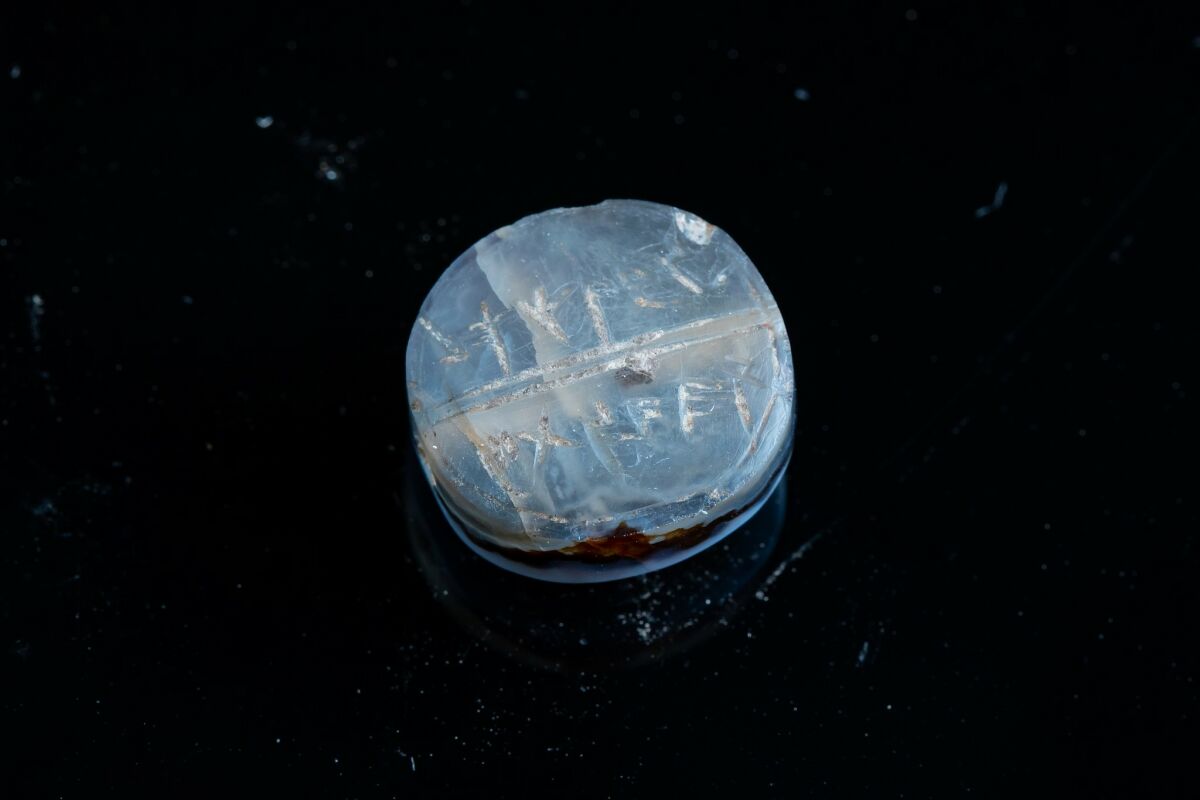
Bullae
Perhaps the inscriptions Jerusalem is best known for—in sheer quantity, as well as in their reference to biblical figures—are the bullae, or clay impressions left by the seals of officials. The names of the biblical figures Hezekiah, Ahaz, Jehucal, Shelemiah, Gedaliah, Pashur, Gemariah, Shaphan, Hilkiah, Azariah, Nathan-Melech and Isaiah have all been found on Jerusalem bullae (along with roughly a dozen or more additional names of lesser certainty).

A total of 162 bullae, with a combined total of 319 registers of text containing 377 words made up of 1,275 letters, have been discovered from excavations in Jerusalem—and these are only the epigraphic bullae (bullae bearing text). A far larger number of primarily iconographic bullae (bullae bearing images) have been discovered.
For example, while Dr. Eilat Mazar discovered 57 epigraphic bullae in her City of David excavations, her full count was 256. From the City of David excavations of Reich and Shukron, 14 epigraphic bullae out of more than 170 bullae were found. Dr. Joe Uziel’s City of David excavations produced a total of 13 out of 68. The list could go on. If iconographic bullae were included, our total count would be well over 600. These bullae date across the spectrum of the First Temple Period Jerusalem, from the 10th to sixth centuries b.c.e.
Indeed, all such bullae, whether epigraphic or iconographic, speak to a high level of literacy and administrative function. This is especially shown by the reverse side of these clay seal stamps: A majority of them bear papyrus impressions, showing that they sealed a large number of literary documents that were in circulation (more on this later).
In point of comparison: Lachish is often referenced as Judah’s “second city.” Lachish is even recognized for having a comparatively high number of bullae, as discussed in Garfinkel and Mendel-Geberovich’s article. Yet against the many hundreds of bullae discovered in Jerusalem, only 23 have been found at Lachish.
A final point about bullae. There is a certain classification known as “fiscal bullae” (the vast majority in this corpus are “private bullae”). Presently, a total of 35 fiscal bullae are known—almost all, regrettably, from the antiquities market. Still, a general belief is that they originated from Jerusalem. Of these 35, three (and arguably a fourth) are of known provenance (and thus included in this corpus): All are from Jerusalem.
Jar Handle Seal Impressions
In a similar manner to bullae, jar handles can often bear private or public seal impressions. Thirteen private jar handle seal impressions are known from excavations in Jerusalem, bearing 24 personal names (22 of which are unique). These 13 seal impressions, dating between the eighth to early sixth centuries b.c.e., have a combined total of 25 registers of text, containing 27 words made up of 105 letters.
Far more common, however, are jar handle impressions known as lmlk (למלך)—“Belonging to the King.” The exact function of these seals, which are generally believed to have emerged during the reign of Hezekiah (at the end of the eighth century b.c.e.), is still debated. One common theory is that they were an administrative measure implemented in advance of the oncoming Assyrian invasion by Sennacherib.

In addition to the lmlk text, these seals typically bear the name of one of four cities: Hebron, Ziph, Socoh or Mmst (ממשת, a still-debated Hebrew word). They also bear a motif of either an Egyptian-style winged scarab beetle (compare with 2 Kings 18:20-21; Isaiah 30:1-3; 31:1-3) or a winged sun (compare with the motif on King Hezekiah’s bulla, Malachi 3:20—Malachi 4:2 in other, non-jps translations—and Dr. Mazar’s belief that the bulla’s winged sun best relates to Hezekiah’s later life, post-healing—The Ophel Excavations: Final Reports Vol. II, pages 255-256).
An accurate count of such seal impressions is hard to come by, as they are relatively common and comparatively underreported. The dedicated website LMLK.com is sometimes cited in print, totaling 294 for excavations within Jerusalem. This resource has not been updated in some time, however. Based on a review of subsequent excavation publications, it is safe to say that we have a present minimum of 317 lmlk seal impressions from Jerusalem—but that number is likely much higher. The largest chunk of these, a total of 107, came from Kathleen Kenyon’s City of David excavations.
Ostraca
Jerusalem is not known for its quantity of ostraca—inked pottery sherds. The practice of using broken pottery sherds as a writing medium is most famously known from hoards at Samaria (102), Arad (over 200) and other sites. Still, 21 ostraca have been uncovered in Jerusalem, containing a total of 62 registers of text, with 102 words made up of 355 letters. Notable among them are administrative lists of names.
Actually, the comparative lack of ostraca found at Jerusalem compared particularly to other, smaller Judean sites is interesting from another angle. In their excellent 2020 article, Garfinkel and Mendel-Geberovich wrote: “Prima facie, this situation is paradoxical: Do marginal sites actually contain more evidence for writing than the kingdom’s main centers?”
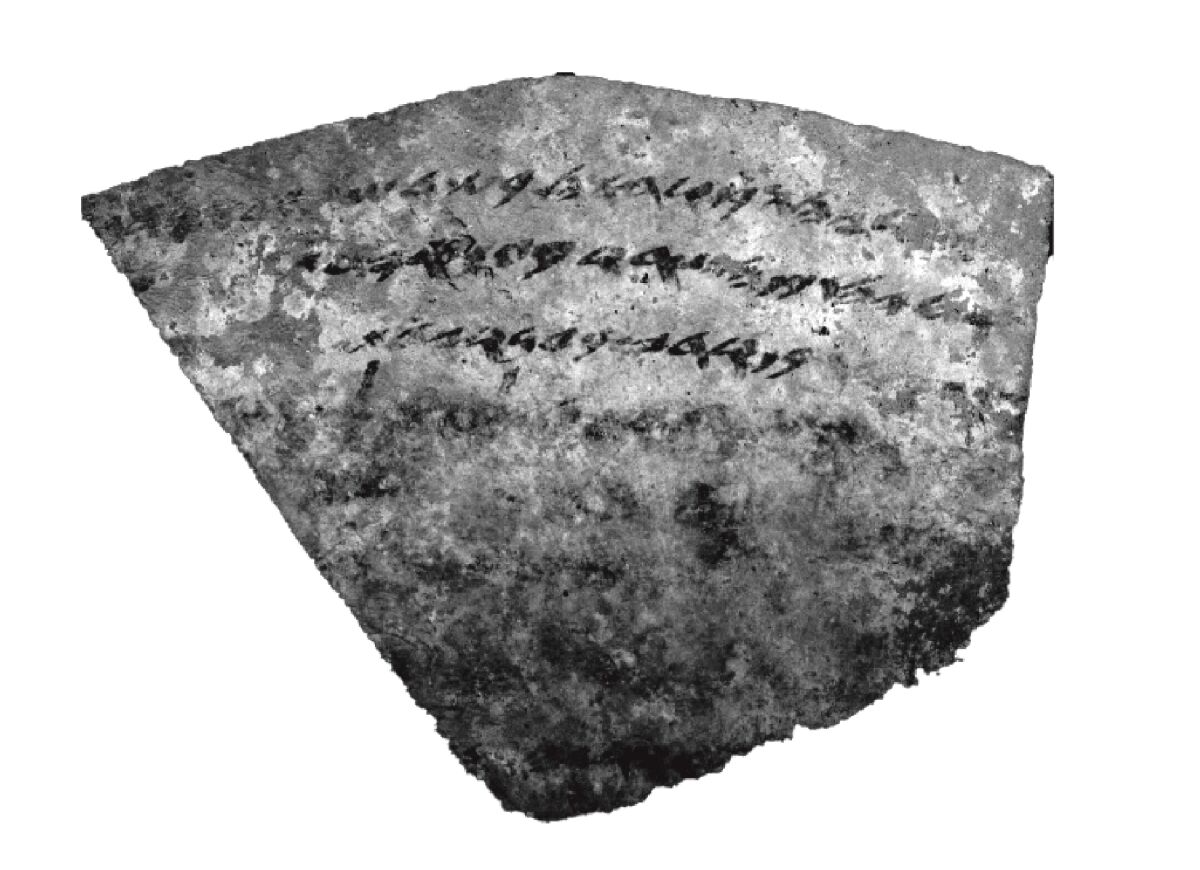
“Evidently, most of the bullae come from Lachish and Jerusalem,” they wrote. “We argue that the distribution of ostraca and that of bullae are mutually complementary and compensatory. It was in the two major centers of the kingdom, Jerusalem and Lachish, that the holders of the highest bureaucratic positions were active. They wrote on expensive papyrus and used their seals to seal them. On the other hand, at minor sites and in the kingdom’s periphery, papyrus was harder to come by and therefore minor officials working there wrote on potsherds, available in abundance in any ancient site. This explains the prevalence of inscriptions in ink on ostraca at minor sites and of bullae in the major centers.”
Thus, a prevalence of ostraca could actually be construed as a sign of administrative poverty (here’s looking at you, Samaria—again, comparatively)—as opposed to a rich, seal-stamped, papyrus-based administration.
Other Pottery Inscriptions
Around 60 pre-fired and post-fired, chiseled and inscribed pottery inscriptions have been uncovered in Jerusalem, dating from the 10th to early sixth centuries b.c.e. They contain a combined total of 61 registers of text, with 72 words made up of 151 letters.
Notable among these are five inscriptions in the South Arabian Script—four from the City of David, dated tentatively to around the ninth century b.c.e., and one from the Ophel, dated to the 10th century b.c.e. The latter, recently identified and published by Dr. Daniel Vainstub as a South Arabian text referring to incense, has made headlines around the world (pictured below); this is thanks to its implicated connection to the biblical account of incense trade between the South Arabian kingdom of Sheba and Jerusalem during the 10th century b.c.e.

Other Inscribed Objects
Other notable inscriptions found in Jerusalem include a sizable (38-by-14 centimeters) cylindrical stone object containing a single register, four-word, 17-letter sentence. The stone piece, based on “edits” or “corrections” contained within the inscription, is believed to have been some sort of scribal exercise. Dated to the eighth century b.c.e., it was discovered during Shiloh’s City of David excavations.
Additionally, a cube-shaped bronze weight (a pym) bearing a three-register, three-word, 13-letter inscription was discovered in the topsoil of the Temple Mount. First published in 1903 by George Barton, Dr. Barkay dates the item palaeographically quite early, to somewhere within the 10th to ninth centuries b.c.e.
The list of inscriptions could go on. This working corpus does not (yet) include the large quantities of inscribed, limited-character stone weights found in Jerusalem. Nor does it include the hundreds of “potters’ marks” and other such single-character inscriptions that have been discovered (many of which contain some form of x, +, ת or ט symbols; also jar handles bearing a פ or ק symbol, the latter suggested as signifying “korban”). Yair Shoham noted 304 such incised handles from Shiloh’s City of David excavations alone (Qedem 41). Combining these additional inscriptions would surely put the total number of First Temple Period inscriptions found in Jerusalem well into the thousands.
Still Only a Blinkered View
Even still, this only gives us an extremely blinkered view of the level of administration and literacy in the Judean capital. Again, this corpus is strictly limited geographically only to the very nerve center of Jerusalem—to the territory of, or directly adjacent to, the western hill/Upper City and eastern hill/Lower City. In immediate proximity, however, are several nearby, important First Temple Period administrative buildings whose function was directly connected to, and an outgrowth of, Jerusalem’s.
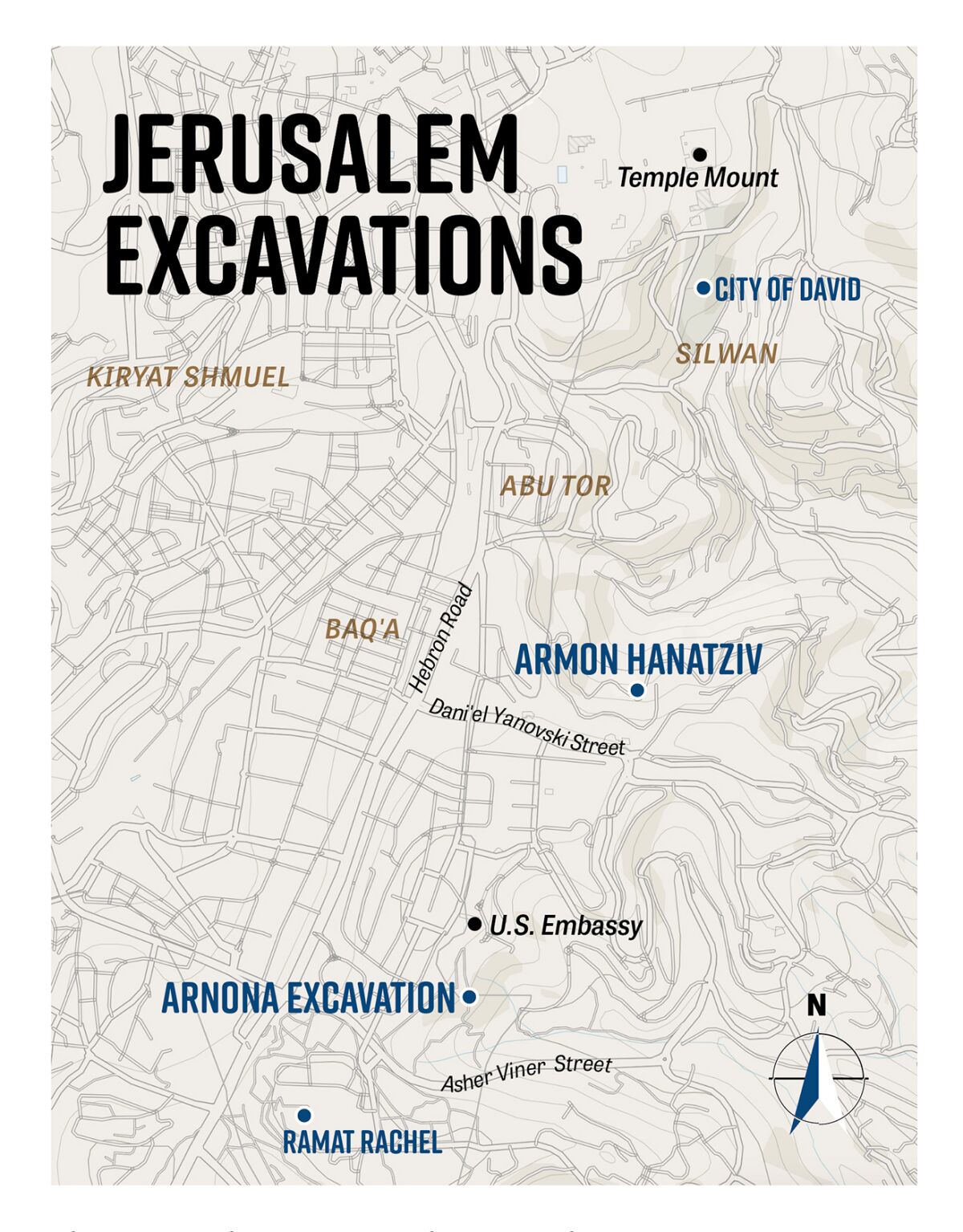
One such example is the eighth-century b.c.e. palatial complex recently discovered at Armon HaNatziv, overlooking the City of David from the south. Another similarly dated and proximate administrative compound is in Arnona, where excavations have recently furnished a trove of 124 lmlk seals and 17 private jar handle seals—the latter hailed in reporting as “one of the largest [corpora] exposed in excavations in the region of Judah.” Slightly further southwest, yet still within close proximity, is Ramat Rahel, another site known for its significant quantity of lmlk seals (around 200) and from which two inscribed seals have been found.
First Temple Period Jerusalem, as administrative capital, was no single, small and limited outlying city, and thus neither should it be solely examined as such. Certainly, comparison of such rich and varied epigraphic remains from the central city environs alone show Jerusalem to have been incomparable as an administrative powerhouse. Yet outside of its city walls was also a necessary administrative satellite support structure for managing the affairs of the state, and these, along with their inscriptions, should be considered jointly in assessing the significance and strength of the capital.
Answering Some Objections
Naturally, objections to this analysis of Jerusalem’s administrative power will (and have) come. One such objection is that Jerusalem has been heavily excavated, hence the large number of inscriptions uncovered. This is true. Over the past century and a half, numerous excavations have taken place in the city. But the same is true at other locations around Israel—many of them on a large scale.
Jerusalem, however, is a far more difficult location to excavate. It is, in most areas, densely populated. Even in those limited areas that aren’t, politics and other factors make it incredibly difficult to carry out excavations. Further, most of these excavations in Jerusalem have been concentrated on much later period remains (Islamic, Byzantine and Roman). And excavating the Temple Mount, at the heart of ancient Jerusalem, is out of the question. Most excavations in the city have largely been piecemeal, in very select and restricted areas. On the other hand, for example, Tel Megiddo is a massive tel that is entirely open to excavation. The same is true at numerous other sites, such as Tel Dan and Tel Hazor—and the site of ancient Samaria.
But for argument’s sake, take any single excavation within Jerusalem, concentrating on Iron Age remains. Reich and Shukron’s City of David excavation produced 170 bullae; Uziel’s City of David excavation, 68 bullae; Mazar’s City of David excavation, 256 bullae; Kenyon’s City of David excavations, 107 lmlk seals; the recent excavations at Arnona, 141 jar handle seals. The list goes on.
Entire sites aside, are there any single excavations that so consistently compare?
A further objection, regarding the quantities of bullae found at Jerusalem, is that wet-sifting—a practice which has only come into vogue over the past two decades—has helped produce the abundance of administrative inscriptions. This, again, is true. But the practice of wet-sifting is not limited only to Jerusalem. And none of Jerusalem’s four monumental inscriptions were wet-sifted. None of the four large funerary inscriptions were wet-sifted. Neither was the trove of 51 bullae, one of the largest bullae hoards in Jerusalem, found during Shiloh’s excavations.
Jerusalem of David and Solomon?
It is true that most—but not all—of our referenced inscriptions date to around the eighth to early-sixth centuries b.c.e. Against the backdrop of the debate about the significance and administrative power of Iron Age iia (10th century b.c.e.) Jerusalem—the period of David and Solomon—this could perhaps be seen as a validation for theories of a comparative weakness of the city, at least during this time period. Should this lead us to conclude that writing, scribal activity and significant administration only emerged in Jerusalem from the eighth century b.c.e. onward?
Quite the contrary.
This corpus has concentrated solely on epigraphic finds. We do still have several such items from the 10th and ninth centuries b.c.e.—still a significant amount compared to discoveries from other sites (something highlighted by Prof. Christopher Rollston in his 2017 article “Epigraphic Evidence From Jerusalem and Its Environs at the Dawn of Biblical History: Methodologies and a Long Durèe Perspective”).
The majority of epigraphic remains from Jerusalem are in the form of seals and seal impressions. It is abundantly clear by now that such methods of administration—the use of epigraphic seals, seals containing either partly or primarily text—only really came into practice during the eighth century b.c.e. But this does not mean the practice of sealing documents was nonexistent, nor even diminished, during prior centuries.
This corpus is concentrated on inscriptions. But even here we get a limited view of administration because it does not include solely iconographic material. Prior to the eighth century b.c.e., administrative documents were still circulating within Jerusalem (and to a significant degree)—but during the Iron iia period, they were being stamped by iconographic seals.

This is aptly demonstrated in Othmar Keel’s Corpus der Stempelsiegel-Amulette aus Palästina/Israel, Katalog Band V (2017, pages 282-511). His corpus contains 65 such “glyptic” seals that have been found in Jerusalem, dated between the mid-11th and eighth centuries b.c.e.—the majority of them attributed to the 10th to ninth centuries. Of these glyptic seals, some contain hieroglyphs and a handful “pseudo script.” The majority, however, are purely iconographic. Actually, for this earlier period of First Temple Period Jerusalem, we have a significantly higher quantity of iconographic seals than we do epigraphic seals from the latter.
It is a similar story with the seal impressions—the bullae. Keel documents 176 bullae from this equivalent period that have been discovered in Jerusalem. Likewise, the majority are from the 10th to ninth centuries b.c.e. And again, in this case, we have more iconographic bullae from the earlier half of Jerusalem’s history than we do epigraphic bullae from the latter.
During the era of David and Solomon, stamps are clearly in circulation and items are being stamped with arguably no less fury than during the later years of Jerusalemite development and administration.
To this end, even more consequential are the reverse impressions on these early bullae. It is unfortunate that for much of Keel’s corpus, impressions on the reverse side are either unidentifiable (due to damage), or otherwise not stated. Yet for those that are, the majority of these 10th-to-ninth-century bullae contain papyrus impressions (47 in total). This shows that a significant quantity of written documents were being circulated among a necessarily literate Jerusalemite administration, during the very earliest period of the capital city.
Certainly, it is from the latter half of Jerusalem’s First Temple Period history that we have the largest quantity of strictly text-based seals and bullae. But that in no way, shape or form implies a lack of literacy or administrative ability for the earlier time period. We still have a large quantity of seals, bullae and, most significantly, papyrus-document impressions.
What is evident is that sometime during the eighth century b.c.e. there was simply a change in Judean administrative method—switching from largely iconographic seals to epigraphic. Whether this was a religious decision, a political one or otherwise remains to be seen. But it certainly was not one based on literacy or administrative strength.
One could compare this with our modern age. Many, if not most, of our seals, signet rings, etc are motif-based—family crests, symbols, designs—not the type of bland text found on many later, Iron Age iib bullae. Does that make us any less literate?
In Sum
Where are such vast quantities of inscriptions from other sites? Samaria? Megiddo? Hazor? This article is not arguing that there were none, or even that there were an insignificant quantity. But if a paucity of finds is taken as “proof” of insignificance—as is often the case with Jerusalem—then are we not to determine that such northern Israelite cities were at least comparatively poorer, administratively? That Jerusalem stands head-and-shoulders above the others as an administrative powerhouse?
Based solely on the sheer quantity of Iron Age ii inscriptional remains, no city, within the entire Levant, compares to Jerusalem. No other Judean city. No northern Israelite city. No Phoenician, Philistine, Moabite, Edomite or Ammonite city, capital or otherwise from this period. Other such sites may be known for their quantities of individual epigraphic media, such as ostraca (for example, Samaria—though as we have seen, this medium can be described, if anything, as a mark of administrative poverty). Yet Jerusalem stands apart, unequalled in quantity and variety of inscriptional remains, and with examples from all centuries—the 10th, ninth, eighth, seventh and early sixth centuries b.c.e.
Based on known epigraphic remains, First Temple Period Jerusalem stands chief among the cities of the ancient Levant as an unmatched administrative powerhouse.
Sidebar: Jerusalemite Papyri
Aside from the Negev desert regions, Israel’s climate is not conducive to the preservation of ancient organic materials such as papyri. Thus, we can only get a sense for the circulation of such documents based on their “ghost” remains on the backs of bullae that sealed them—the papyrus impressions.
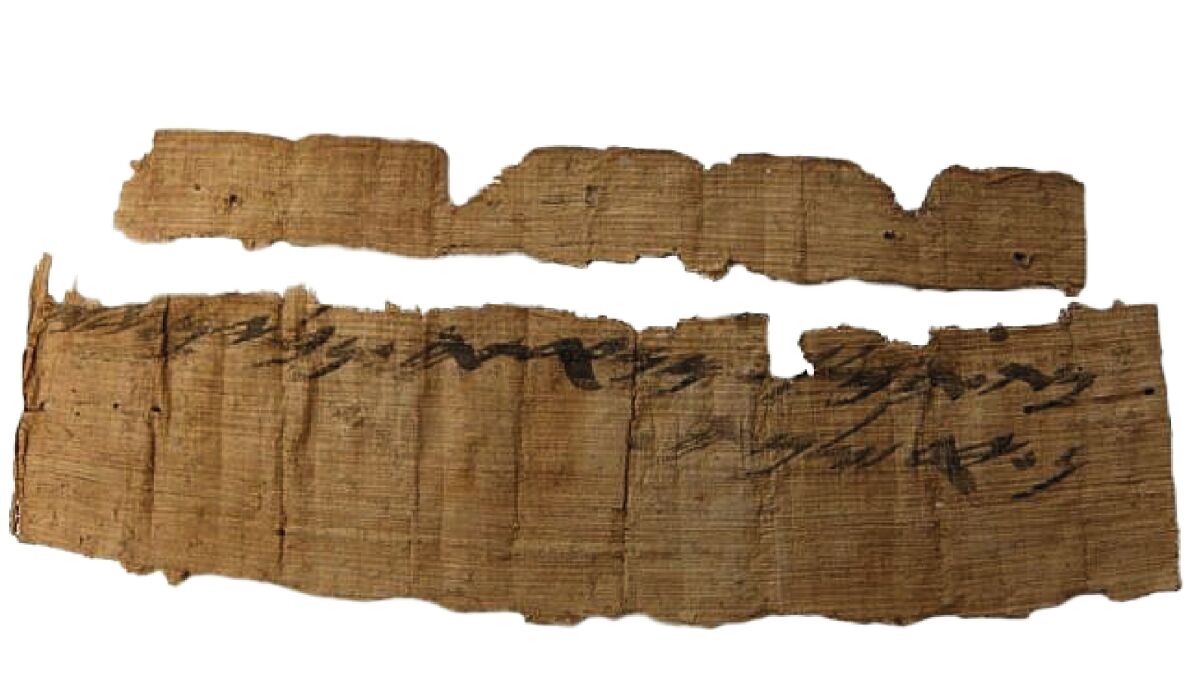
Only three First Temple Period papyri fragments are known, all from the Dead Sea region. But perhaps fittingly, one of these fragments actually mentions “Jerusalem” by name, noting a shipment of wine to the city (and thus named, the “Jerusalem Papyrus”).
Needless to say, these documents within the capital city—the papyri—would have contained by far and away the greatest percentage of textual material, of greatest textual significance.
Sidebar: Women of Jerusalem
There is a fairly common modern assumption that during this “biblical period” there was some kind of a suffocating patriarchal system in place, oppressive to women and causing them to all but disappear from society. This decidedly is not the case, as both archaeology and the Bible illustrate (the latter as argued by Carol Meyers in her 2014 Journal of Biblical Literature article “Was Ancient Israel a Patriarchal Society?”). At least, as the epigraphic evidence reveals, this certainly wasn’t the case in the capital, Jerusalem.
Of the 32 seals discovered in Jerusalem, at least four owners are women. Further, if we compare the number of seals that clearly belong to women with those that clearly belong to men (excepting names that are too damaged to identify), we have a ratio of female-to-male stamp holders of 4:20, or 20 percent. (In a 2006 paper, Dr. Gabriel Barkay submits an additional five Jerusalemite seals, not included in this forthcoming corpus as they do not sufficiently fit the parameters of known provenance. However, if proved legitimate, they would bring the total to 37 for Jerusalem—and the fact that one of them also belongs to a female owner perfectly fits with the 4:20 ratio!)
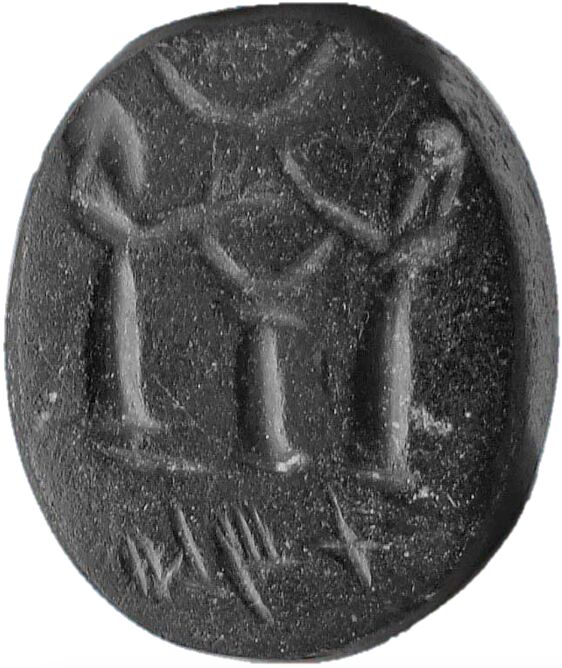
Consider also: Lachish is often cited as Judah’s “second city,” yet from Jerusalem we have as many female seal holders as we do seals from Lachish in their entirety. In fact, provenanced seals belonging to female owners are only known from Jerusalem.
Also of note is that one of the private jar handle seals mentioned in the article belonged to a female owner, and two ostraca make reference to women—one being a record of wheat or barley to be supplied to a list of female recipients. This, again, is the only such known list of women in an Iron Age ii archaeological context, leading Garfinkel and Mendel-Geberovich to conclude that “[a]pparently, only Jerusalemite women held high social and economic positions” (“Hierarchy, Geography and Epigraphy: Administration in the Kingdom of Judah”).
Perhaps such discoveries should not be surprising, however: The presence of women fulfilling certain high-ranking positions in Jerusalem is highlighted in the Bible, such as the prophetesses Huldah and the wife of Isaiah (2 Kings 22:14; Isaiah 8:3).


